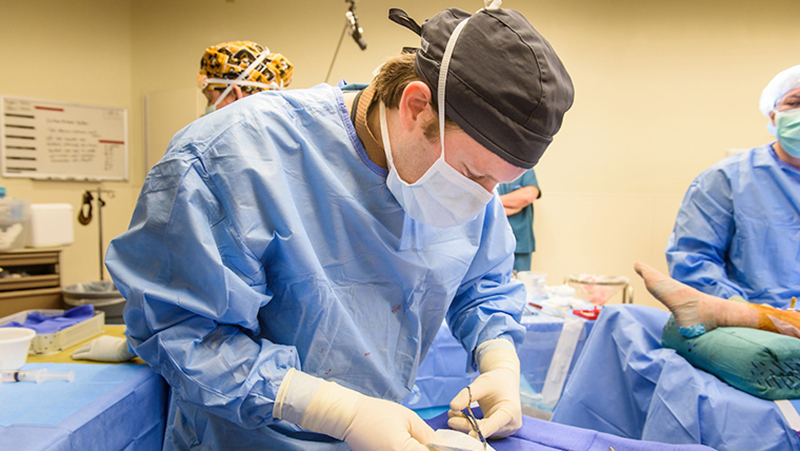
Quadriceps tendon ruptures are disabling knee injuries that typically occur in adults ages 40 and older. Obesity, illness or traumatic injuries can cause these types of injuries. Most tendon ruptures require surgery, and the current gold-standard technique for repairing these ruptures is transosseous (literally, through-the-bone) tunnel repair, a lengthy, technically demanding procedure. In a new study, University of Missouri researchers have found that suture anchors, a less-invasive repair technique, responded better to strength-testing after the surgery, supporting more movement in the knee earlier in the recovery process.
“The suture anchor technique requires a smaller incision and disrupts less of the patient’s normal anatomy around the knee,” said Seth L. Sherman, MD, assistant professor of orthopaedic surgery at the MU School of Medicine. “By using a minimally invasive approach, we create a better healing environment for the knee, which supports more movement in the knee earlier after surgery.”
Sherman conducted tendon-repair surgeries using both techniques on human cadaveric tendon specimens. After the surgeries, Sherman, along with Ferris Pfeiffer, PhD, assistant professor in the MU College of Engineering and School of Medicine, simulated rehabilitation to test the strength of the repaired tendons. Sherman and Pfeiffer found that the tendons repaired with the less-invasive suture anchor technique had significantly less gapping after the stress tests. Gapping is a sign of a weak tendon repair in which a gap between the tendon and the bone occurs, decreasing the tendon’s ability to heal.
The researchers also found no difference in the amount of pressure the tendon could withstand during either technique. Sherman said this means not only were the suture anchors more resistant to gapping, but they also had the same ultimate strength as transosseous tunnel repairs.
While the suture anchor technique has advantages, such as shorter operating time and less damage to soft tissue, one disadvantage is the cost effectiveness of the procedure, Sherman said. Sherman cites a 2012 study published in Orthopedics that found the cost of using suture anchors ranged from $435 to $560 per patient, approximately $190 to $320 more than the transosseous technique. However, earlier rehabilitation in the suture anchor group may offset this initial difference.
Sherman has started using the suture anchor technique in living human patients and plans to compare the healing time of the two techniques in future research.
“Although a clinical study is needed to confirm this technique as a viable alternative to the current gold-standard technique, these results support suture anchors as a viable, less-invasive alternative to repairs of the quadriceps tendon,” Sherman said.
Sherman’s study, “Biomechanical Evaluation of Suture Anchor Versus Transosseous Tunnel Quadriceps Tendon Repair Techniques,” recently was published in Arthroscopy: The Journal of Arthroscopic and Related Surgery, a peer-reviewed journal focused on the advantages and disadvantages of minimally invasive surgeries. Funding for the study was provided by Arthrex, an orthopedic medical device company. Sherman reported his funding source as a potential conflict of interest.





